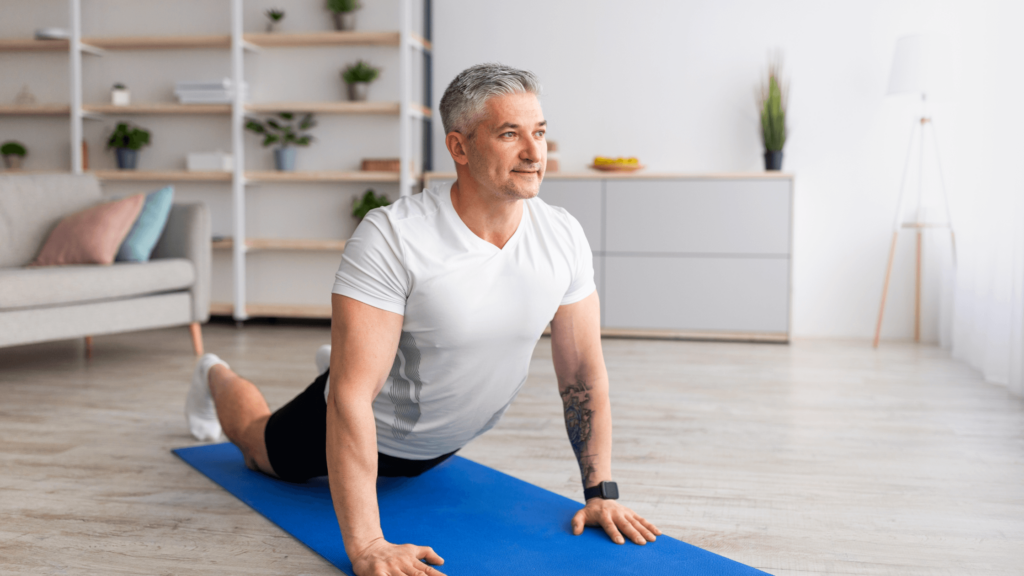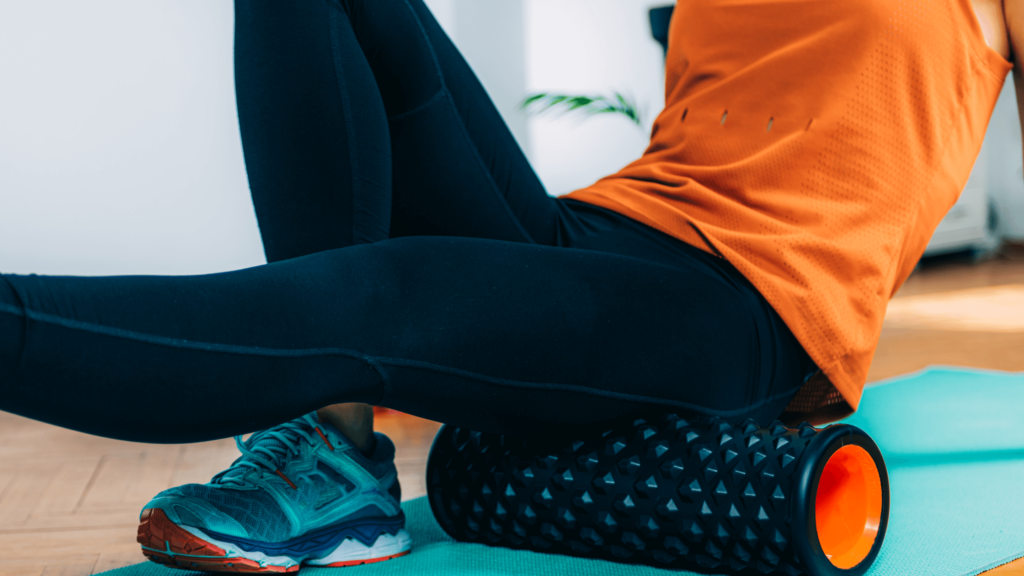Working in trades demands a lot from your body. Repetitive tasks like lifting heavy materials, bending into tight spaces, and reaching overhead can significantly strain your muscles and joints. Without proper mobility, these physical demands can lead to stiffness, discomfort, and even serious injuries over time. Prioritizing mobility training can improve balance, increase strength, and reduce injury risk, helping skilled laborers move more efficiently and stay healthier on the job.
Quick look
- Trades workers are at an increased risk of injury due to repetitive movements, heavy lifting, and awkward positions that strain muscles and joints.
- Regular mobility exercises support faster recovery, ease muscle soreness, and prevent chronic pain that could sideline workers from the job.
- Simple strategies, such as foam rolling, dynamic stretching, and strength training, can significantly enhance mobility and overall physical performance.
- Prioritizing mobility helps trades workers stay stronger, safer, and more resilient throughout their physically demanding careers.
What is mobility?

Mobility is your body’s ability to move joints through their full range of motion smoothly and easily. Your muscles, joints, ligaments, and even your nervous system all play a role in how well you move. When they’re in sync, you can lift, bend, and reach without feeling stiff or worn out.
Mobility vs. flexibility
Mobility and flexibility are often confused, but they are not the same. Flexibility is about how far your muscles can stretch—like pulling a rubber band. Mobility is about how well your joints and muscles move in their full range of motion. It’s a full-body effort that involves your muscles, joints, and nervous system coordination. It requires good flexibility to go through a range of motion while also requiring strength and coordination to control the movement with ease.
For example, you might be flexible enough to touch your toes, but if you can’t squat down with weight on your back, that’s a mobility issue. If you have good mobility, you’ll be able to perform a full squat, pick up heavy items from the ground without lower back strain, and reach directly above your head when working with no sharp pain in your shoulders.
Why mobility matters for trades workers
For construction workers, mobility is a must for longevity. Workers constantly climb ladders, lift heavy objects from the floor, and crawl into tight spaces—these tasks demand a body that moves well. If your mobility is off, smaller muscles not built for heavy lifting pick up the slack. That’s when injuries like strains and sprains happen. But when your body moves how it’s meant to, it moves freely and without compensating. This ability reduces your risk of getting hurt on and off the job.
Here’s how mobility helps construction workers daily:
- Ease of movement: Good mobility allows trades workers to move more efficiently and comfortably. Whether lifting heavy tools, climbing ladders, or maneuvering through tight spaces, mobility makes these movements smoother and less strenuous.
- Reduced injury risk: Mobility training strengthens the muscles and joints, improving stability and balance. When your body moves well, you are less likely to pull a muscle, strain a joint, or fall due to poor movement patterns.
- Better movement patterns: When your joints move freely and your muscles are strong, your body naturally follows safer and more efficient movement patterns. This reduces the need to compensate with smaller, weaker muscles that aren’t built for heavy tasks. Better movement patterns prevent wear and tear on joints and help you maintain strength for demanding jobs.
- Stronger and healthier joints: Regular mobility exercises keep joints flexible and strong. Healthy joints can handle the physical demands of construction and trade work without becoming stiff or painful.
- Greater strength and performance: Optimal mobility allows trades workers to move into the correct positions when lifting, carrying, or using tools. This prevents injury and improves overall strength and performance.
Mobility and recovery
After a long day on the job site, it’s tempting to crash on the couch and skip any sort of recovery. But here’s the thing—ignoring recovery doesn’t make the soreness disappear. In fact, it can make it worse over time. That tight back or sore knees today could turn into a serious injury down the line.
The good news?
Studies have shown that even short bouts of mobility exercises can significantly aid in muscle recovery. Active recovery—like light stretching or gentle movement—improves blood flow, reduces inflammation, and speeds up muscle repair.
Incorporating this small habit into your routine doesn’t take much time but pays off in the long run. Just ten to fifteen minutes of mobility work at the end of the day can make a big difference. You’ll not only feel better after work but also protect yourself from chronic pain and long-term injuries that could sideline you from the job.
5 tips to boost mobility on the site

Improving mobility doesn’t have to be complicated. With simple strategies, trades workers can feel stronger and move better on the job. Here’s how:
- Self-myofascial release (SMR): Tools like foam rollers or massage balls can help release muscle tightness and break up scar tissue. Rolling out your back, hips, and legs daily for just a few minutes improves blood flow and loosens tight muscles, making movement easier.
- Stretching: Dynamic stretches are perfect for warming up before a shift. Try leg swings, arm circles, or lunges to get your joints moving. After work, static stretches like hamstring stretches or shoulder rolls can help muscles relax and recover.
- Strength training: Building strength in stabilizing muscles—like your core, hips, and shoulders—supports better mobility. Exercises like bodyweight squats, lunges, and planks help create a strong foundation for safer, more efficient movement on the job.
- Perform targeted mobility exercises: Focus on areas that take the most strain during work, like the hips, shoulders, and lower back. A few minutes of mobility work each day can make a huge difference in how you feel and perform on the job. Start small, stay consistent, and your body will thank you.
Simple mobility exercises to start your day
Mobility for the feet and ankles
Strong, flexible feet and ankles are essential for stability and balance, especially on uneven surfaces common on job sites. Poor mobility here can lead to knee and hip problems.
- Foot rolling: Place a lacrosse ball or foam roller under your foot and roll in all directions for 1–2 minutes per foot. This will relieve tension in the arches and improve foot flexibility.
- Toe tuck stretch: Kneel with your toes tucked under and sit back on your heels. Hold for 30–60 seconds to stretch the bottoms of your feet and toes.
Mobility for the hips and glutes
Tight hips and weak glutes can cause lower back pain and limit movement. Improving mobility in the leg and hip muscles makes lifting, bending, and squatting much safer and more effective.
- Hip flexor stretch: Kneel on one knee with the other foot forward. Push your hips forward slightly to stretch the hip flexors. Hold for 30 seconds on each side.
- Glute bridge: Lie on your back, knees bent, and feet flat. Lift your hips off the ground while squeezing your glutes. Perform 10–15 reps to strengthen the glutes and stabilize the lower back.
Mobility for the thoracic spine (upper back)
A stiff upper back can lead to shoulder pain and limit safe lifting. Keeping this area mobile improves posture and reduces strain.
- Cat-cow stretch: On all fours, alternate between arching and rounding your back—inhale as you round and let your belly drop; exhale as you arch and hollow out your belly. Repeat for 1–2 minutes to loosen the spine and improve mobility.
- Thoracic bridge: Start seated with your knees bent and hands behind you. Push your hips upward while squeezing your shoulder blades together. Hold for 20 seconds, repeat 3 times.
Bottom line
Mobility isn’t just for athletes—it’s essential for trades workers who rely on their bodies every day. Improving mobility can prevent injuries, reduce pain, and boost overall job performance. Simple, consistent mobility exercises can make heavy lifting, bending, and reaching safer and easier. Prioritizing mobility now means staying stronger, healthier, and more productive for the long haul.
Want more tips to stay safe and perform your best on the job? Subscribe to our newsletter and follow us on social media for expert advice on injury prevention, recovery, and peak performance.



